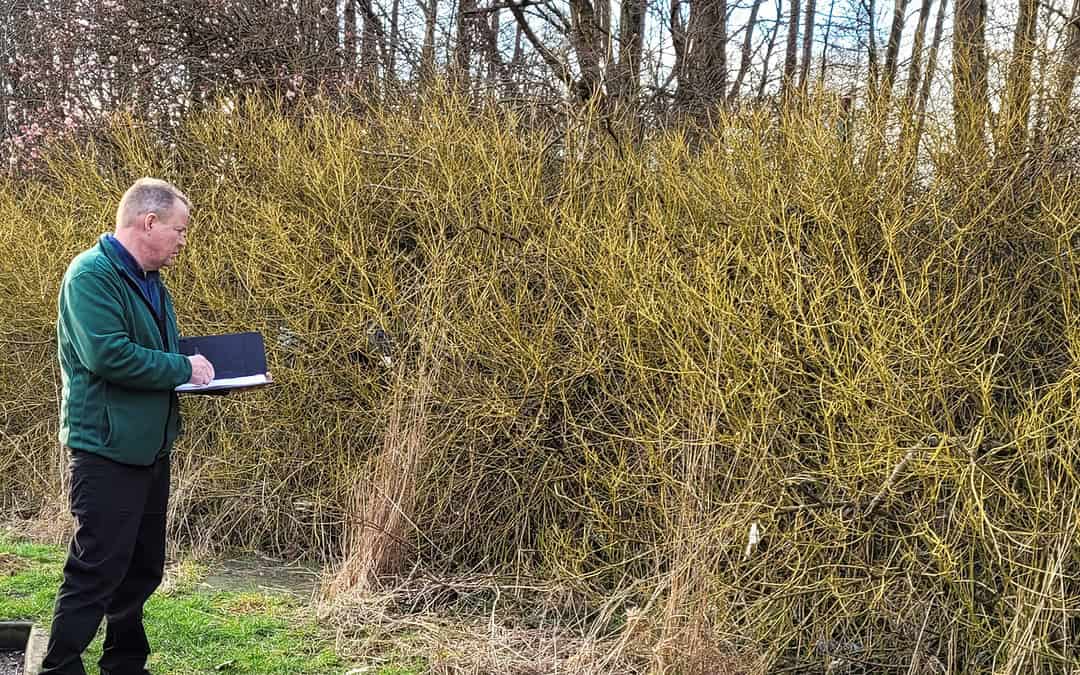The importance of regular Japanese knotweed monitoring on your property
Japanese knotweed is known to be a highly invasive plant species. It can in some instances cause significant damage to your property. It can grow up to 3 meters in height and spread rapidly through its root system. The Rhizomes can Grow through cracks and holes in walls and foundations, causing damage to the structure of the building. As a result, it is essential to understand The Importance of Regular Japanese Knotweed Monitoring on Your Property
Regular monitoring is necessary to identify and control the growth of Japanese knotweed. In this article, we will explore the importance of regular Japanese knotweed monitoring on your property.
- What is Japanese Knotweed?
- The Importance of Regular Japanese Knotweed Monitoring
- How to Monitor Japanese Knotweed on Your Property
- The Consequences of Not Monitoring Japanese Knotweed
- Conclusion
What is Japanese Knotweed?
Japanese knotweed is a highly invasive plant species that originates from East Asia. It was introduced to the UK in the 19th century as an ornamental plant. Since then, it has become a significant problem due to its aggressive growth and destructive nature.
The Importance of Regular Japanese Knotweed Monitoring:
- Early Detection: Regular monitoring of your property for Japanese knotweed is essential for early detection. Early detection is crucial because Japanese knotweed can spread rapidly, making it challenging and expensive to control once established.
- Preventing Damage: Regular monitoring can help prevent the damage caused by Japanese knotweed. The plant can grow through concrete and tarmac, causing structural damage to your property. By detecting Japanese knotweed early, you can prevent it from causing damage to your property.
- Compliance with the Law: Japanese knotweed is classified as a controlled plant under the Wildlife and Countryside Act 1981. It is illegal to allow the plant to spread into the wild, and landowners have a legal obligation to control its growth. Regular monitoring can help ensure compliance with the law.
How to Monitor Japanese Knotweed on Your Property:
- Visual Inspection: Regular visual inspection of your property can help identify the presence of Japanese knotweed. Look for distinctive heart-shaped leaves and bamboo-like stems.
- Site Survey: Conducting a site survey can help identify the extent of the Japanese knotweed infestation on your property. This can be done by a qualified surveyor who can provide a report detailing the extent of the infestation.
- GPS Mapping: GPS mapping can be used to identify the exact location of the Japanese knotweed on your property. This can help track the spread of the plant and monitor its growth over time.
The Consequences of Not Monitoring Japanese Knotweed:
- Structural Damage: Japanese knotweed can cause significant structural damage to your property, including walls, foundations, and drainage systems.
- Legal Action: Failure to monitor and control the growth of Japanese knotweed can result in legal action. Landowners have a legal obligation to control the spread of Japanese knotweed and prevent it from causing damage to neighbouring properties.
- Decreased Property Value: Japanese knotweed can significantly decrease the value of your property. Potential buyers may be deterred by the presence of Japanese knotweed, which can make it challenging to sell your property.
If You find Japanese knotweed on your property
If you are monitoring your property and discover Japanese knotweed, Japanese Knotweed Plus Ltd can provide you with help and assistance. Additionally we can offer services related to managing this invasive plant. Here are some ways Japanese Knotweed Plus Ltd can help you:
- Site Survey: The company can conduct a professional site survey to assess the extent of the Japanese knotweed infestation on your property. Moreover our survey will help determine the most suitable management approach.
- Treatment Plans: Japanese Knotweed Plus Ltd can develop customized treatment plans tailored to your specific situation. These plans may include various methods to control and eradicate Japanese knotweed effectively.
- Herbicide Treatment: The company can apply herbicides to target the Japanese knotweed infestation. They will follow safe and regulated practices to ensure effective treatment while minimizing the impact on the environment.
- Management and Monitoring: Japanese Knotweed Plus Ltd can provide ongoing management and monitoring services to prevent the re-establishment of Japanese knotweed. This may involve follow-up treatments and regular site visits to ensure the effectiveness of the treatment program.
- Insurance-Backed Guarantee: The company may offer an insurance-backed guarantee for their treatment and removal services. This guarantee provides you with financial protection in case the Japanese knotweed re-emerges after the treatment.
Specific services
Provided by Japanese Knotweed Plus Ltd may vary, so it’s advisable to contact them directly to discuss your requirements and get detailed information about their offerings.
The duration of Japanese knotweed treatment can vary depending on several factors, including the extent of the infestation, the treatment method employed, and environmental conditions. Typically, Japanese knotweed treatment can take several years to achieve
Herbicide Treatment: Herbicide application is a commonly used method for Japanese knotweed control. The treatment usually involves multiple applications over several seasons. Typically, herbicide treatments are performed in spring or early summer when the plant is actively growing. It may take a few growing seasons, often spanning two to three years, to completely eradicate the knotweed infestation.
It’s important to note that Japanese knotweed treatment requires careful planning, expertise, and adherence to legal and environmental regulations. Each treatment program should be tailored to the specific situation, and the duration can vary accordingly. Consulting with professionals, such as Japanese Knotweed Plus Ltd, will provide you with a more accurate estimate of the treatment duration based on your specific circumstances.
To Summarize
Regular monitoring of your property for Japanese knotweed is needed to identify and control its growth. Early detection can help prevent the damage caused by Japanese knotweed, ensure compliance with the law, and save you money in the long run. By taking a good approach to Japanese knotweed monitoring, you can protect your property and its value.
